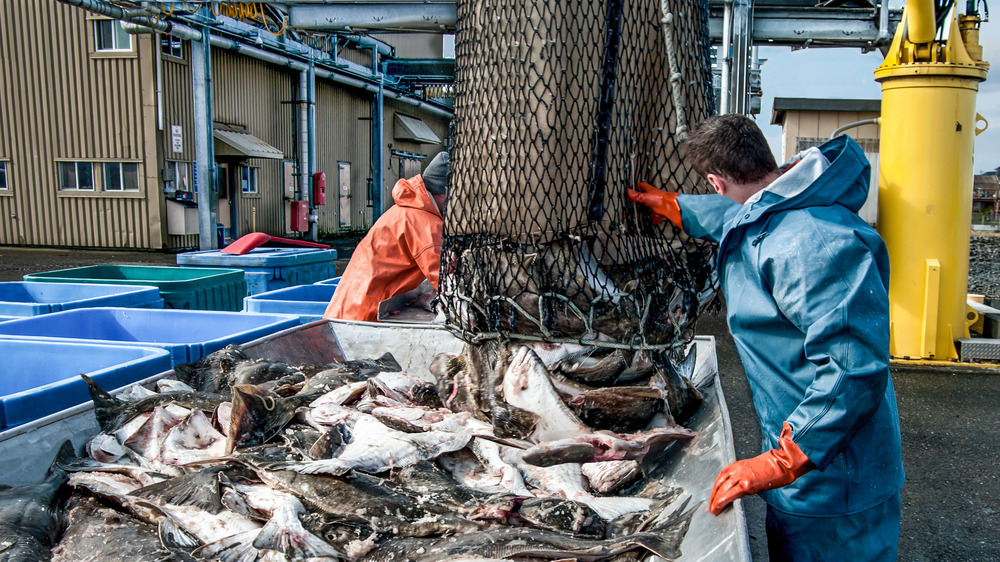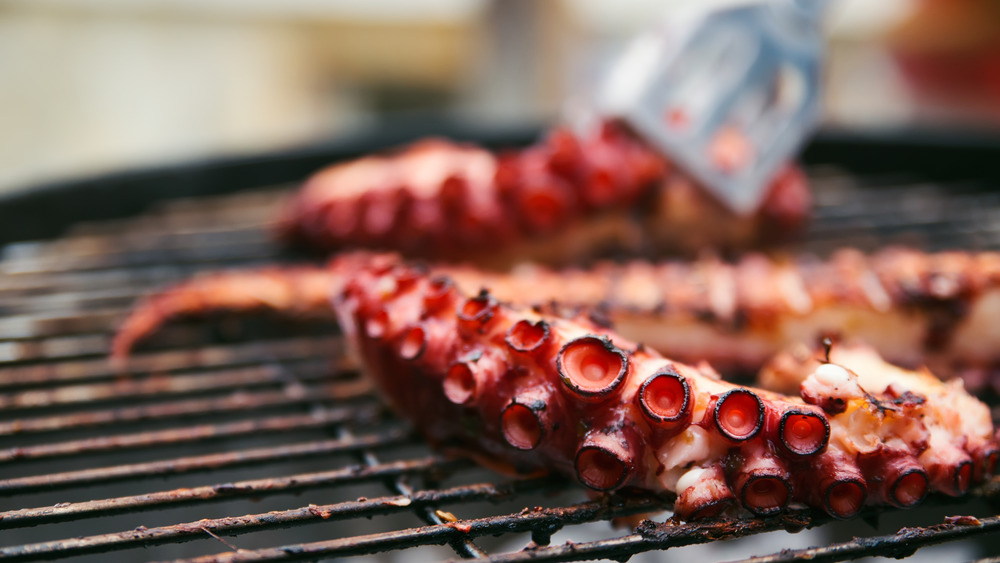Home Cooking May Save The Seafood Industry. Here's How
As restaurants around the country have shut down due to pandemic concerns, many areas of the food and dining industry have suffered, from agriculture to (yes) seafood. However, new consumer habits may help save the seafood industry.
According to Bloomberg, a report by NOAA Fisheries found that commercial fisheries' revenue fell by about a third over the first half of 2020, compared to the five-year average. Meanwhile, the National Fisheries Institute notes that the pandemic has resulted in an additional $2.2 billion in debt for the seafood industry as a whole. Beyond financial woes, the fishing industry faces difficulties due to CDC guidelines, with harsh restrictions for quarantining, social distancing, and more — all guidelines necessary for worker and public health and safety, but which hinder productivity and profits.
The one bright mark on all of this is that consumer seafood sales are up. Frozen and fresh seafood sales both rose by about a quarter as compared to 2019 numbers for the month of December. Overall, seafood sales have increased substantially over the entire pandemic, much more than sales for other grocery store items.
Why are people buying more seafood — and what are they doing with it?
The likely primary reason more folks are buying seafood at the grocery store this past year? If you can't get it out at a restaurant or aren't comfortable going out to a restaurant, you might as well make your favorite dishes at home. Bloomberg says that, generally, consumers spend twice as much on seafood at restaurants as they do on seafood for home consumption; but with the former option ripped away, all that's left is the latter. Now, home cooks are buying seafood from a variety of sources, from their local markets to Walmart.
A New York Times report from early in the pandemic looked at the growing seafood trend that was making itself known even as far back as May 2020, and specifically at what types of seafood home cooks were buying. While shelf-stable fish options — like smoked salmon or salt cod — were popular, as was frozen fish, the report noted that more home cooks were growing adventurous in their seafood shopping, opting for more expensive, rare, or more difficult-to-cook items, like bluefin tuna belly, octopus, or drumfish.
Is this a cooking fad that will continue for another year and help keep the seafood industry afloat? As it's lasted for nine months so far, the odds are in the fishing industry's favor.

